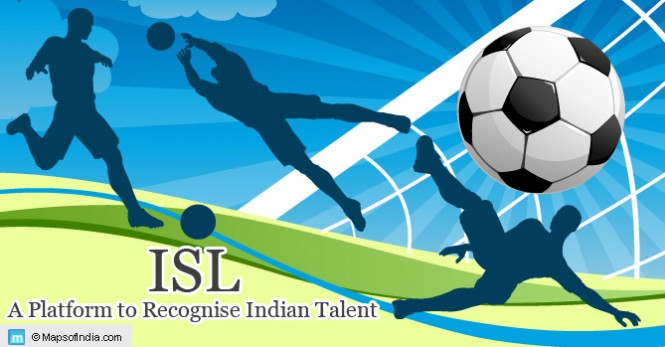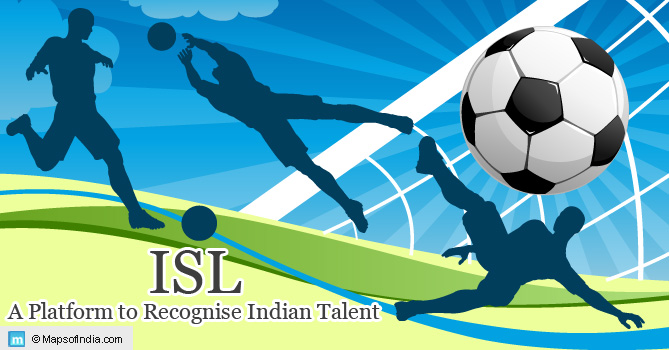 The first edition of Hero Indian Super League was staged in 2014 with eight franchises based across eight cities and states in India. These were either ones with a long-standing tradition of football (Kolkata, Goa, Kochi and Guwahati, which represented the entire northeast region) or ones where the game was avidly followed such as Pune, Mumbai, Delhi etc. One of the main aims behind starting the league was to ensure greater popularity for football in India and also make Indian football a name to be reckoned with around the world. There was also some concern – will this league be able to match the popularity of the Indian Premier League?
The first edition of Hero Indian Super League was staged in 2014 with eight franchises based across eight cities and states in India. These were either ones with a long-standing tradition of football (Kolkata, Goa, Kochi and Guwahati, which represented the entire northeast region) or ones where the game was avidly followed such as Pune, Mumbai, Delhi etc. One of the main aims behind starting the league was to ensure greater popularity for football in India and also make Indian football a name to be reckoned with around the world. There was also some concern – will this league be able to match the popularity of the Indian Premier League?
To the relief of everyone concerned the league has been an astounding success on that front. All the stadia were filled up by enthusiastic supporters in almost all the games. At the end of the tournament it was also reported that Indian Super League was one of the most-watched football championships in the world – right up there with the English Premier Leagues and La Ligas of the world. The tournament also never lagged behind in terms of star value considering the fact that in most cases names such as Saurav Ganguly, MS Dhoni, Virat Kohli, Sachin Tendulkar, Ranbir Kapoor, John Abraham, Abhishek Bachchan, and Hrithik Roshan were associated with the tournament as owners. In fact, the glitzy opening ceremony at Salt Lake Stadium in Kolkata was perhaps a starrier affair than the IPL opening ceremonies.
Will It Help Indian Talent Get Recognised on the Global Stage?
This must have been one of the questions on the minds of the organisers. However, the tournament has enjoyed some fantastic coverage. All the matches were shown live across the country on Star Sports. When we juxtapose this with the I League, thought to be the main league of India but half of whose games are not shown on national television, it is indeed an enviable position to be in as an athlete. The matches were shown in Australia by Fox Sports, in Europe by Eurosport 2, and in the UK by Star TV UK. From an exposure point of view the players could hardly have asked for more.
What further helped them would have been the opportunity to play with and against the world class international players, some of whom had World Cup experience as well. The coaches employed by the franchises in the ISL were also of the highest order with several of them such as Antonio Lopez Habas, Zico, and Ricki Herbert equipped with the experience of coaching a national team. There were partnerships with top clubs in Europe and training camps organised abroad. So, all in all it was a win-win situation for the young Indian players.
The results were also there for everyone to see. Soon after the tournament, one of the finds of the tournament – FC Goa’s Romeo Fernandez – got the opportunity to play top level football in Brazil.
Will It Help Grassroots Football in India?
This is a rather vexing question. Everyone would like to believe that they will since they can. These clubs are owned by wealthy businessmen, actors and former cricketers who have the necessary wherewithal to help with youth and grassroots development of Indian football. They have the money and the connections – and perhaps more importantly, the credibility – necessary to get the job done. In fact, Nita Ambani, one of the co-owners of FC Mumbai City, has already initiated a football project for kids.
Having said all this, it is perhaps unrealistic to expect eight franchises to change the woeful youth development scenario of Indian football. It is the job of the innumerable clubs that play the top and the second divisions of the I League, the supposedly premier football tournament of India, one that has received the necessary license from AFC, the controlling body for football in Asia. As Pierre Boa, the icon footballer of I League club Mohun Bagan, has rightly said that playing for two months alongside international players will not account for much in the final analysis. Players need to be plucked from their childhood and then developed through training and proper education much like FIFA’s Goal Project is doing in Africa. This is especially true of the economically disadvantaged areas, where there is a lot of talent but not sufficient opportunity for youngsters to develop and fulfill their true potential.
AFC focuses highly on youth development in clubs and in recent past teams with tradition like Mohammedan FC have been barred from participating in the I-League, a professional tournament, because they have no youth development. What the ISL clubs can do is enter partnerships and agreements with clubs in their region and help them with youth development with the rider that the best player will represent their franchise. This will help all, the franchises will get a steady stream of good players and the I-League clubs will get the money needed to do youth development in a much better way than what they have been doing of late.




